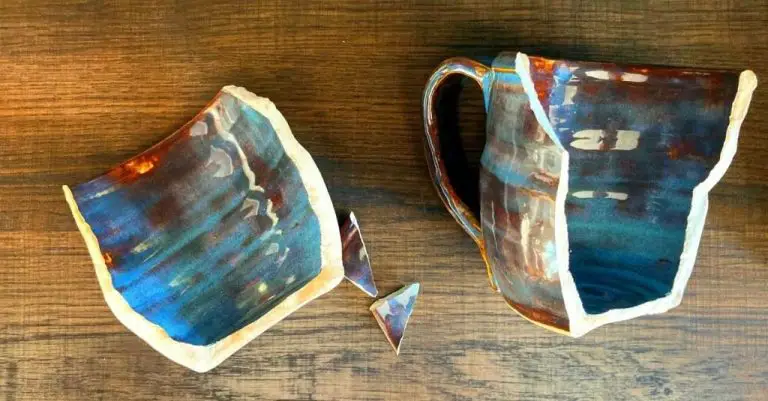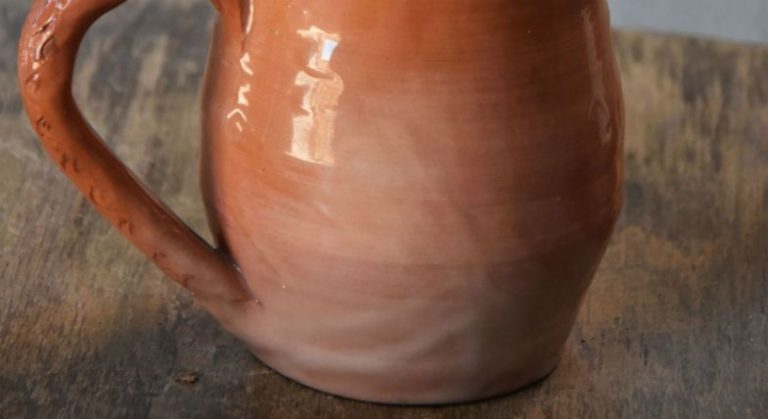What Kind Of Clay Can I Bake In My Oven?
Types of Clay for Baking
There are several types of clay that can be baked in a standard kitchen oven for hardening and finishing:
Polymer Clay
Polymer clay is one of the most popular clays for baking crafts and modeling. It is made from polyvinyl chloride (PVC), comes in a wide array of vibrant colors, and requires baking to permanently harden it. According to Firefly Art Supplies, polymer clay is very versatile and can be sculpted, shaped, molded, and textured before baking. It hardens into a strong, durable material after baking at relatively low oven temperatures of 130°C/275°F.
Air-Dry Clay
Air-dry clay does not require baking, as it will gradually harden and cure at room temperature. However, according to Clay-It-Now, air-dry clay can also be accelerated and hardened in the oven by baking at 110°C/225°F for 10-15 minutes. The advantages of air-dry clay are that it does not require specialized tools or equipment. It also will not burn or scorch in the oven. However, baked pieces may still be fragile.
Oven-Bake Clay
Clays marketed specifically as oven-bake clay are generally polymer clays designed to be hardened through low temperature baking in a typical kitchen oven. They provide an easy introduction to sculpting and baking without needing specialized materials or equipment. Oven-bake polymer clays like Sculpey are available in hardware stores and art supply shops.

Modeling Clay
Modeling clays like plasticine and claydough are meant for modeling and sculpting only. They do not harden well in the oven and are not suitable for finished craft projects requiring durability. These clays are intended for temporary sculptures, stop motion animation, design prototyping, and concept modeling.
Polymer Clay
Polymer clay is made from polyvinyl chloride (PVC) and doesn’t require baking, but can be baked for added strength and durability (https://thebluebottletree.com/best-polymer-clay-brand/). It is considered non-toxic and safe for most uses. Popular brands of polymer clay include Sculpey and Fimo.
Polymer clay remains malleable at room temperature. It hardens when exposed to heat from an oven, generally between 265-275°F. Baking makes the clay stronger and more durable. Projects made from polymer clay can include jewelry, figurines, dolls, and more.
Polymer clay is available in a wide variety of colors that can be blended and mixed together. Many brands also offer specialty clays like translucent, pearlized, and glow in the dark. Sculpey III is an affordable beginner option, while Premo and Kato Polyclay are higher-quality professional grades (https://createalong.com/pages/the-ultimate-guide-to-choosing-the-right-polymer-clay-brand-for-your-project).
Air-Dry Clay
Air-dry clay is made from natural ingredients like clay, flour, and salt. It air-dries naturally and does not require baking. Some popular brands of air-dry clay include DAS Air Hardening Clay and Jovi Air-Dry Modeling Clay.
The main benefits of air-dry clay are that it is easy to use, inexpensive, and dries quickly at room temperature. It does not require specialized tools or equipment. Air-dry clay is great for simple arts and crafts projects. However, it is more porous than polymer clay so painting is required to cover surface imperfections. Cracking may also occur as it dries.
Oven-Bake Clay
Oven-bake clay, also known as pottery clay or ceramic clay, is made from clay, water, and a hardening agent or filler material. It requires baking in a kiln or oven to fully harden and cure the clay. Popular brands of oven-bake clay include Amaco and Makins.
Oven-bake clays are natural clays that have binders and fillers added to improve their workability and durability. The clay maintains its pliability until baked at high temperatures ranging from 165°F to over 2000°F, depending on the type of clay. During baking, the clay hardens permanently into a ceramic material.
There are several types of oven-bake clay:
- Stoneware clays that fire at roughly 2000°F. These are very strong and durable after firing. Popular brands like Makins Ultraclay are stoneware clays.
- Earthenware clays that fire at lower temperatures, around 165°F to 2100°F. These are slightly more porous than stoneware after firing. Amaco Mexican Pottery clay is an example.
- Pottery clays designed for handbuilding and wheel throwing with good plasticity. These fire at mid-range temperatures.
- Sculptural clays that are formulated to capture fine detail. These have minimal shrinkage when firing.
Oven-bake clays offer artists and hobbyists the ability to handcraft durable, high-fired pottery and sculptures using a regular kitchen oven or kiln. With proper baking, oven-bake clays produce ceramic items like mugs, figurines, and decorative pieces.
Modeling Clay
Modeling clay, also known as plasticine, is made from ingredients like clay, talc, and oils. Unlike polymer clay, modeling clay remains pliable and never hardens, even when exposed to air or low baking temperatures.
Modeling clay is designed for sculpting and molding at room temperature. It stays soft and malleable. This makes it easy for artists to shape and continuously rework their creations. However, this also means modeling clay is not suitable for baking in an oven to harden it.
Attempting to bake modeling clay will not properly harden it. The oils in the clay can seep out under high heat, leading to melting, burning, and smoke. The talc filler may also prevent hardening. In some cases, a skin can form on the exterior but the interior will remain soft. Overall, baking modeling clay in an oven is not recommended.
Instead, modeling clay is intended for projects focused on the sculpting process rather than producing hardened clay objects. It can also be used to make molds and prototypes before casting with a more heat-tolerant clay. But it should not go directly into the oven itself.
Sources:
https://www.quora.com/Can-you-put-modeling-clay-in-the-oven
Clay Baking Temperatures
When baking clay in the oven, it’s important to follow the manufacturer’s instructions for proper baking temperature and time.
Typical baking temperatures for clay range from 130°F to 275°F. Polymer clays like Sculpey and Fimo bake on the lower end of this range, around 130°F to 265°F (source). Earthenware clays need higher temperatures, around 275°F (source). Refer to the packaging or manufacturer website for exact recommended temperatures.
Baking at too low a temperature can result in uncured, brittle clay. Too high may burn or scorch the clay. Following instructions will ensure the clay reaches the proper internal temperature to fully cure.
Baking Tips
When baking polymer clay, it’s important to follow some tips to ensure proper results:
Use an oven thermometer to check that your oven is at the right temperature. Ovens can run hot or cold, so relying solely on the oven dial is not always accurate. An oven thermometer placed inside the oven will give you the true temperature (Polymer Clay Safety Tips).
Let polymer clay cool completely before handling after baking. The clay will be very hot and soft after baking, so allowing it to cool prevents deformation. Touching hot polymer clay can also burn your fingers (Polymer Clay Safety Issues).
Bake polymer clay in a well-ventilated room. Opening windows or using a fan is recommended, as heating polymer clay releases trace amounts of fumes. Proper ventilation will prevent buildup of fumes (Polymer Clay Safety Tips).
Finishing Baked Clay
After baking polymer clay, there may be some rough edges or a matte finish that you want to refine before completing your clay project. Here are some techniques for finishing baked clay:
Sand any rough edges of the baked clay gently with fine grit sandpaper or a nail file, taking care not to sand away too much of your sculpture. Start with a 220 grit sandpaper and move up to 400 or 600 grit for a smoother finish (source).
You can paint baked polymer clay with acrylic paints to add color and designs. Make sure to use paints formulated for plastics or apply a sealant first so the paint adheres properly. Let paint dry completely before applying a protective sealant (source).
Apply a liquid polymer clay glaze or acrylic sealant like polyurethane or varnish to give baked clay a glossy finish and protect the surface. Use a water-based finish rated as non-toxic when dry for food-safe pieces. Allow sealer to fully cure before handling the finished clay item.
Storing Clay
Properly storing clay is important for keeping it usable for as long as possible. Clay should be stored in an airtight bag or container at room temperature (Source). This prevents the clay from drying out and becoming hard or cracking. Make sure to squeeze out any excess air before sealing the clay inside the bag or container.
For modeling clay like Play-Doh, it’s especially important to store it in an airtight container to retain moisture and prevent drying out. You may need to mist modeling clay lightly with water if it starts to dry (Source). Don’t store modeling clay in the refrigerator, as this can make it too firm to work with.
In general, clay should be stored in a cool, dark place away from direct sunlight, which can also cause drying. With proper storage methods, most clays can last for many months while retaining their flexibility and workability.
Safety Precautions
When working with clays of any kind for baking, it’s important to take some basic safety precautions:
First, always work in a well-ventilated area. Open windows, use a fan, or consider working outdoors to allow fresh air circulation. This helps avoid potentially breathing in clay dust particles. For further protection, wear a mask or respirator while sculpting, sanding, or doing other tasks that generate fine particulates. Refer to the clay manufacturer’s guidelines for any specific precautions related to the type of clay you are using.
Second, be sure to keep clay out of reach of small children and pets when not in use. Supervise children closely if allowing them to work with baking clay. Some clays can be toxic if ingested.
Finally, follow the manufacturer’s instructions closely related to proper baking temperature, times, and any other usage directions. This will help ensure you are working with the clay safely and efficiently.



